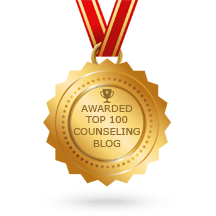ADHD
/This year has begun, and it feels like it is in full swing for everyone. School is back in session, there have inconsistent weather changes, and although many can feel ready to be back to “normal”, it has been a much slower process than any could have imagined. Children have been trying to adjust to all the changes that have been happening for over a year now. Some are back in school, with mask, and maybe others in a hybrid form. There are sports and extra-curricular activities and spending time with friends that we did before the pandemic that were incredibly helpful to children and teens and their mental health and well-being. Without these activities and consistency in their days, children and teens were impacted greatly.
Being at home more it could be easy to see high energy and lack of focus. Now being back at school your child could still struggle to focus when in the classroom setting. For a parent or guardian this could cause some questions for you and what may be happening with your child. It could be Attention-Deficit Hyperactivity Disorder that your child/teen is struggling with. This diagnosis is not just that a child has a lot of energy and does not focus but that the level of inattention, impulsivity and hyperactivity are inconsistent with the child’s developmental level. For a diagnosis, this must interfere significantly with the child’s life and daily functioning.
Some signs your child may be struggling with ADHD:
Inattention:
◦ Often fails to give close attention to details or makes careless mistakes in schoolwork, at work, or with other activities.
◦ Often has trouble holding attention on tasks or play activities.
◦ Often does not seem to listen when spoken to directly.
◦ Often does not follow through on instructions and fails to finish schoolwork, chores, or duties in the workplace (e.g., loses
focus, side-tracked).
◦ Often has trouble organizing tasks and activities.
◦ Often avoids, dislikes, or is reluctant to do tasks that require mental effort over a long period of time (such as schoolwork or homework).
◦ Often loses things necessary for tasks and activities (e.g. school materials, pencils, books, tools, wallets, keys, paperwork, eyeglasses, mobile telephones).
◦ Is often easily distracted
◦ Is often forgetful in daily activities.
Hyperactivity and Impulsivity:
◦ Often fidgets with or taps hands or feet, or squirms in seat.
◦ Often leaves seat in situations when remaining seated is expected.
◦ Often runs about or climbs in situations where it is not appropriate (adolescents or adults may be limited to feeling restless).
◦ Often unable to play or take part in leisure activities quietly.
◦ Is often "on the go" acting as if "driven by a motor".
◦ Often talks excessively.
◦ Often blurts out an answer before a question has been completed.
◦ Often has trouble waiting his/her turn.
◦ Often interrupts or intrudes on others (e.g., butts into conversations or games)
In addition, the following conditions must be met:
• Several inattentive or hyperactive-impulsive symptoms were present before age 12 years.
• Several symptoms are present in two or more setting, (e.g., at home, school, or work; with friends or relatives; in other activities).
***This is not an extensive list of symptoms of ADHD. If you have suspicions that your child is suffering from this, please find a therapist to conduct a thorough assessment with you and your child. ***
Here is a video that you can watch to learn more about ADHD, and it is expressed in a simple, animated way for children to watch and learn about their diagnosis also.
Here are some ways you can support your child with their energy and focus, whether or not they have been diagnosed with ADHD.
Brain Breaks/Move Breaks!- if you can see that your child is getting a little wiggly that could be a great chance to do some movement. Dance videos are great, simple exercises like 10 jumping jacks, 20 frog jumps, or balancing on one foot for 15 seconds can help get some wiggles out and give the child a chance to think about something different than what they have been focusing on.
Organization- This can be very helpful in chores or homework. Make a set folder for homework and then all the assignments can go in one place or having a checklist of what needs to be done can help the child focus and give a guide for their chores. Make a routine and stick to it every day! This will help with consistency for the child and can help the child remember their chores.
Breathing Techniques- there are a lot of these on the internet but when the child is beginning to become hyper, they can do a breathing technique to help calm down. Here is one called “Candle and Flower Breathing”. You imagine smelling a flower and blowing out a birthday candle. https://youtu.be/qTN_MtV5TFw
Remember that the child is in a learning process too and it may take some repetition with you before they can do these things on their own. Give them chances to try and give their best. Most of all if you are unclear of what to do or ADHD is something your child may be struggling with, find a therapist and they can support you in finding out.
Written by: Brandi Hatter, MSW






